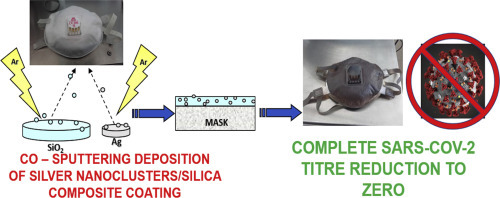- Record: found
- Abstract: found
- Article: not found
Virucidal effect against Coronavirus SARS-CoV-2 of a silver nanocluster/silica composite sputtered coating

Read this article at
Abstract
During the current pandemic of COVID-19 caused by the new Coronavirus SARS-CoV-2, the confinement measures slowed down the contagion, but did not completely avoid the disease diffusion for health workers, patients and the remaining population. The individual protection equipment (e.g. facial masks), filters for air conditioning systems and for medical respiratory devices do not possess an intrinsic antimicrobial/virucidal action and they are susceptible to microbial/viral colonization. An efficient antimicrobial/virucidal technology on air filtering media is crucial for maintaining a safe air environment and protecting people, in particular when lockdown is eased. This short communication reports about the virucidal effect, preliminary verified towards Coronavirus SARS-CoV-2, of a silver nanocluster/silica composite sputtered coating, directly applicated on a FFP3 mask.
Graphical abstract
Highlights
Related collections
Most cited references11

- Record: found
- Abstract: found
- Article: not found
Silver nanoparticles as an effective disinfectant: A review
- Record: found
- Abstract: found
- Article: not found

